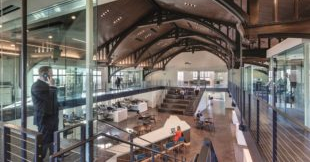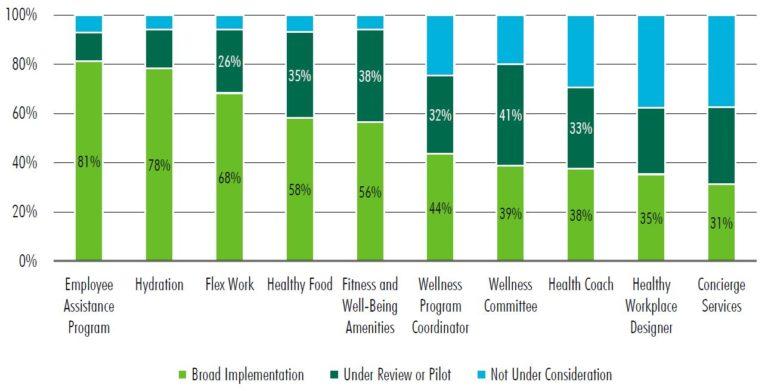Health and Wellness Trends in the US Corporate Workplace
by Julie Whelan, Head of Occupier Research, CBRE Americas
The Green Perspective | Live & Work
Encouraging for those who made New Years’ Resolutions to get healthier and perform better at work, our research has found that when a company focuses on employee health and wellness, workers report increases in engagement, retention rates increase, and absenteeism declines.
Thanks to advancements in collaboration tools, such as social networking and mobile technologies, today’s employees are hyper-connected. This connectivity allows productivity to continue when team members are away from the office, but the potential negative health effects of being plugged in should not be dismissed. This workforce is also working hard, whilst workers’ lives are becoming a balancing act. These modern-day realities, along with the growing demands of most jobs, are chronic sources of stress for workers, and may lead to serious health implications.
In partnership with CoreNet Global, CBRE has conducted a Health and Wellness Survey to query Senior Corporate Real Estate (CRE) Executives in the United States on health and wellness initiatives in their respective corporations. The survey gathered 211 responses by representatives from occupiers, technology firms, and financial services firms.
The importance of employee health and wellness is rising in the workplace: 89% of firms represented reported that they are focused on this growing trend.
Who leads corporate health and wellness initiatives?
Although corporate health and wellness initiatives are most often led by Human Resources, the strong supporting role CRE currently plays continues to trend upward. Most respondents reported that CRE plays a meaningful role in these initiatives, and 91% anticipated that CRE engagement in such initiatives would increase during the next one to two years.
How do building design trends integrate with health and wellness initiatives?
While floor plate efficiency and cost are clearly major factors in selecting buildings, respondents indicate that health and wellness factors are also increasingly important in the selection process. Fifty-eight percent of respondents reported requirements for building accessibility and commute convenience, while 45% give preference to locations that connect with nature.
Inside buildings, CRE is engaging in various health and wellness design trends. Ergonomics seems to be the most rooted and widely adopted approach, with Air Quality, Quality of Light, and Thermal Comfort noted as additional popular design priorities. Other trends include Active Design – to encourage movement by employees in the workplace – and Activity Based Design to allow employees to choose among various working “zones” according to the task at hand.
What employee amenities are being offered as health and wellness initiatives?
Such offerings as employee assistance programs (confidential counselling), hydration stations and flexible schedules are hallmarks of today’s wellness initiatives. Increasingly, occupants are being offered access to amenities that help them sustain at work the healthy lifestyle choices that many have incorporated into their personal routines. Fitness facilities, healthy food options and dedicated wellness resources are examples of workplace offerings that are both in place and being widely piloted.
Employee Health and Wellness is no longer a programmatic afterthought; rather a deliberate workplace strategy that top employers are addressing at all project stages – from idea conception through space delivery and management. As employers and employees alike have come to recognize health and wellness as a workplace issue, we have seen it emerge as a factor in the CRE marketplace, and we have seen its importance rise in the corporate sphere.
Wellness cannot be simply delivered; rather, it requires strategic development of initiatives across many parts of an organization, including CRE.
Companies are focusing on the gap between current provisions and what employees would need to operate optimally; health and wellness initiatives fit in this gap, seizing crucial opportunities to enhance engagement, retention, productivity and, in turn, business success. Broadly speaking, these initiatives will benefit from continued innovative thinking. Wellness cannot be simply delivered; rather, it requires strategic development of initiatives across many parts of an organization, including CRE.




